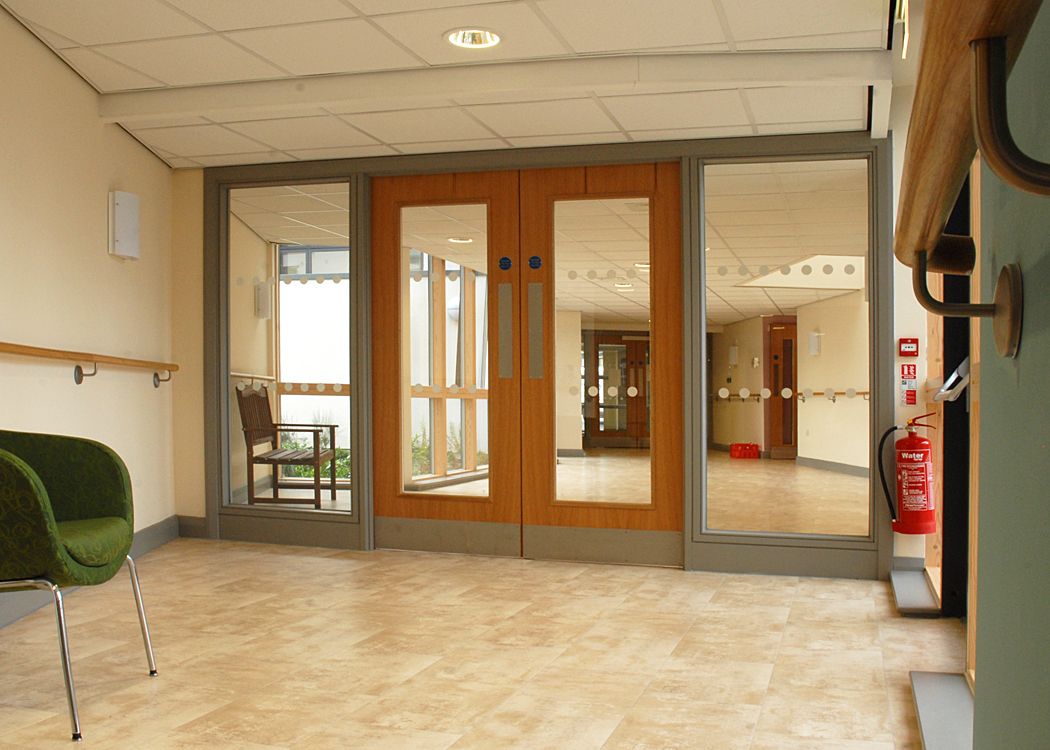Let timber shine
A common material in the construction and fenestration industry, timber is used within window and door systems across a wide range of building types. Despite this, misconceptions still persist regarding the flammability of timber and its suitability in a fire safety system. To help clear this up, Andy Lake, our UK Sales Director, explains why it should not be disregarded as an excellent fire barrier.

While the world of construction and fenestration has changed so much in the past few decades, from new tools to new fabrication methods, some things remain the same; timber being one of the best examples. Even now, timber remains an important building material, routinely specified across some of the world’s most exciting developments and a key part of the modern-day fenestration industry. Its enduring success can be put down to a number of qualities, such as its durability, sustainability, cost-effectiveness and timeless aesthetic.
Despite this, there remains the potential for building professionals to hold a diminished view of timber over its perceived poor fire performance. However, this perception is entirely misguided. While timber does burn, it can still be relied upon to provide excellent performance in the case of a fire and, when used as part of a certified and tested glazed system, can achieve the highest levels of fire protection.
All species of timber will have their own specific density and charring rate, which can be used to predict the material’s fire resistance in the event of an incident. Using this information, specifiers and fabricators are able to work with fire safety glass experts, such as Pyroguard, to design timber frames to the right section and density, ensuring that they offer the level of protection required for the project. While hardwoods offer lower charring rates than others, most types of timber are suitable for use in fire safety glazed systems, as long as they have been correctly designed with the required density.
With the right testing and assessments, it is possible for those using timber to accurately predict how the material will perform in a blaze. As well as proving invaluable at the design, specification and fabrication stage, having access to this data can also enable building owners and facility managers to put together more robust fire escape plans for the building’s occupants.
In comparison to the perceptions of timber as being a flammable material, with the right guidance it can in fact achieve an EI60 fire rating, which guarantees a minimum of 60 minutes Insulation and Integrity against an ongoing blaze. However, this robust and long-term fire performance is not the only benefit of choosing timber.
Timber fire-rated glazed systems are also more effective at retaining their shape and structure when exposed to high levels of heat, such as those experienced in a fire, with fire test results demonstrating how stable timber can be when subjected to flame. Unlike metallic materials, such as steel, it does not warp, twist or distort in a blaze, with this sturdiness providing added assurance that the fire safety glass will remain secure in its frame and the overall system intact.
In addition to its stability and reliable performance in the event of a fire, timber is also favoured by many for its aesthetic value. As well as being naturally beautiful, timber can be stained and designed more ornately than other alternative materials, opening up more design opportunities. What’s more, the material is an ideal choice for projects where sustainability is a key concern, with timber representing a low-carbon choice.
More than ever before, people are questioning the fire safety performance of the buildings they live and work in. While scrutiny is important, it’s equally important that those in the construction industry don’t jump to unfound conclusions about the fire performance of certain materials, such as timber. While timber does burn, with the right test evidence and technical support it can enable the build of frame profiles and glazing systems that will achieve maximum fire safety performance. Seeking the expert guidance of a fire safety glass manufacturer, such as Pyroguard, with its own library of test evidence is always recommended for fabricators, installers and specifiers.
To learn more, please contact us.
Further reading
Technical fire glass specifications at your fingertips – the story of the development of Pyroguard’s TechLibrary
Read morePyroguard joins new umbrella brand Saverto: svt Group realigns international brand strategy
Read moreMeeting the EN Standards for fire safety with fire doors
Read moreReady to get started?
Contact us to for further advice or to discuss your next project.
